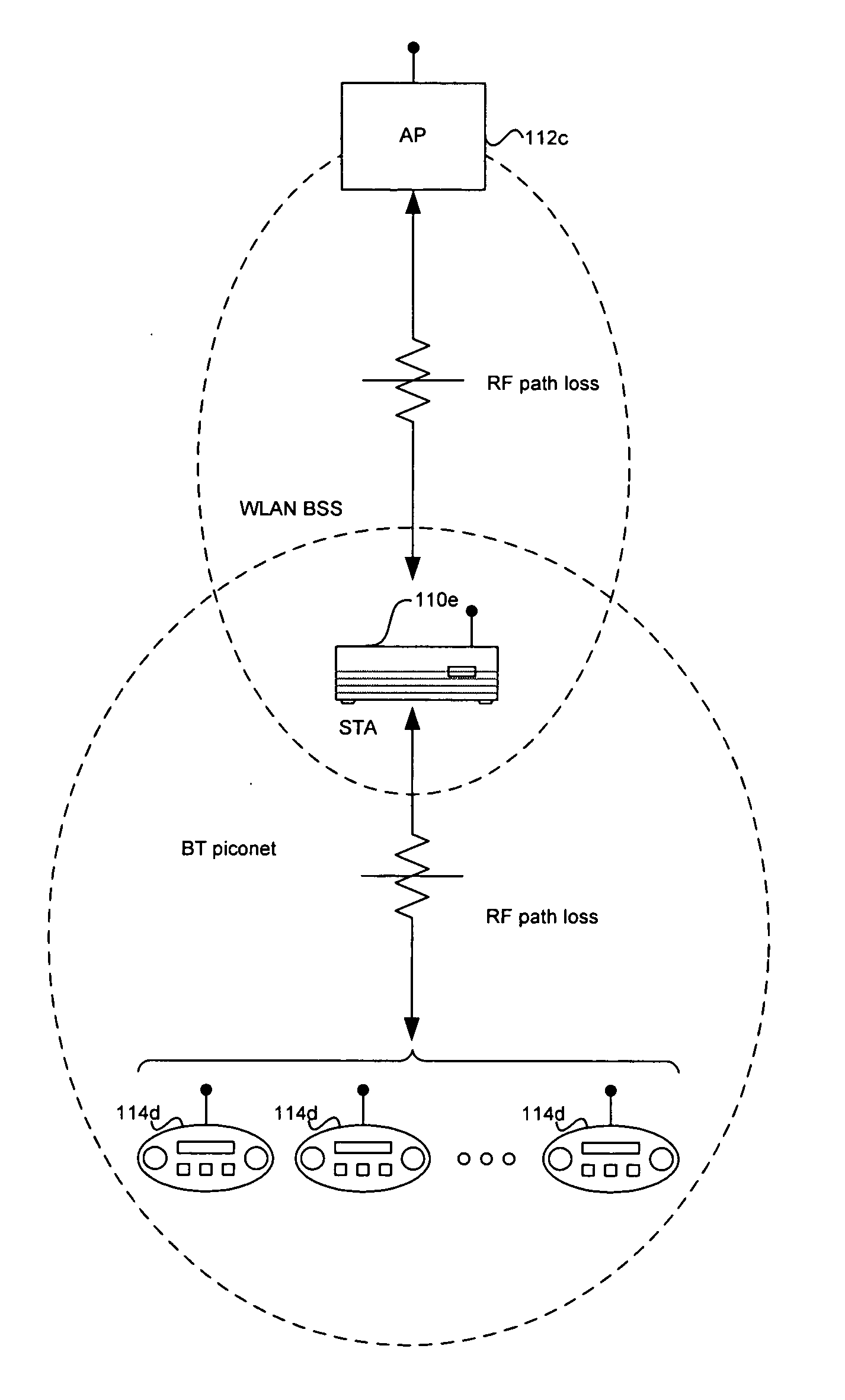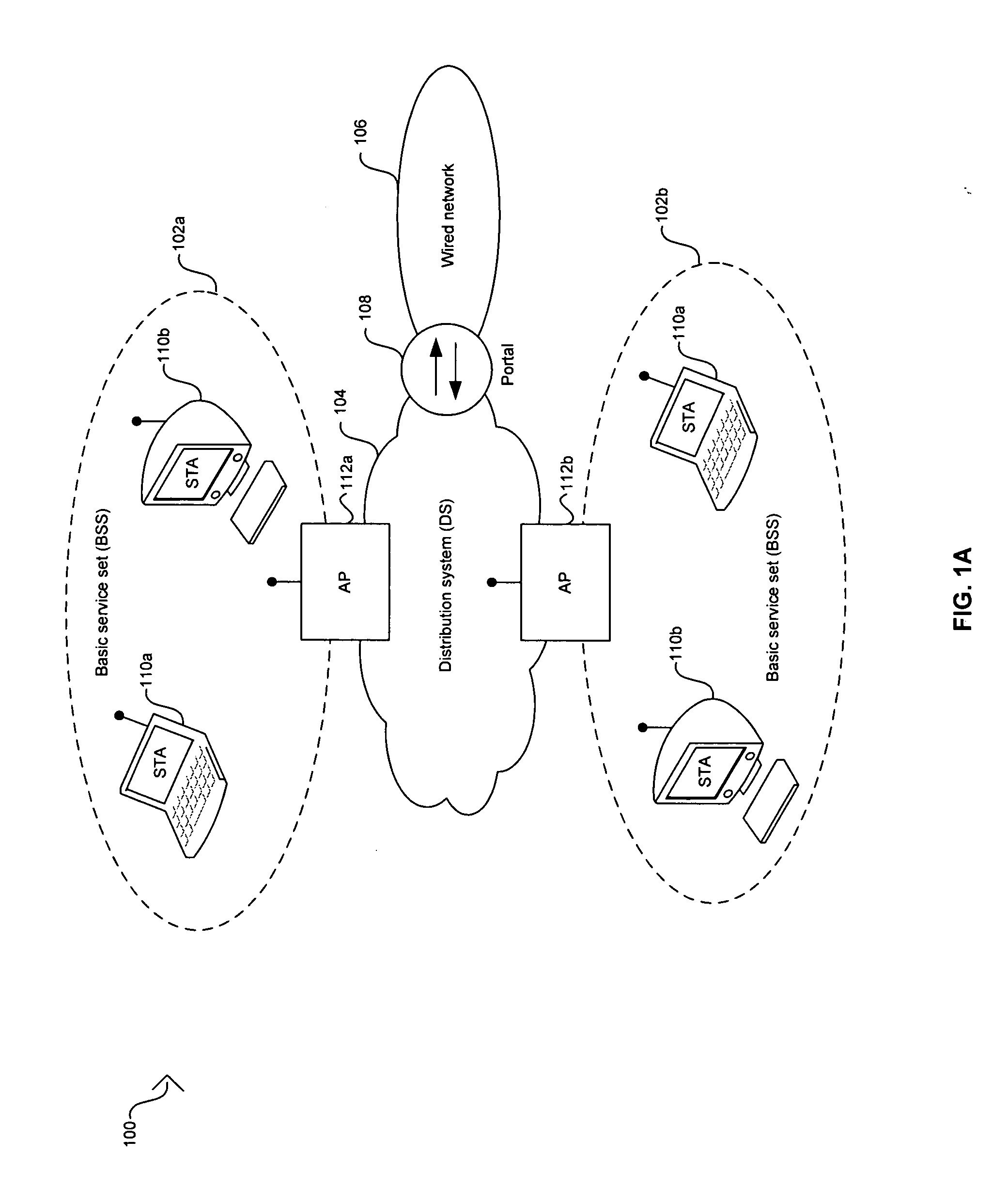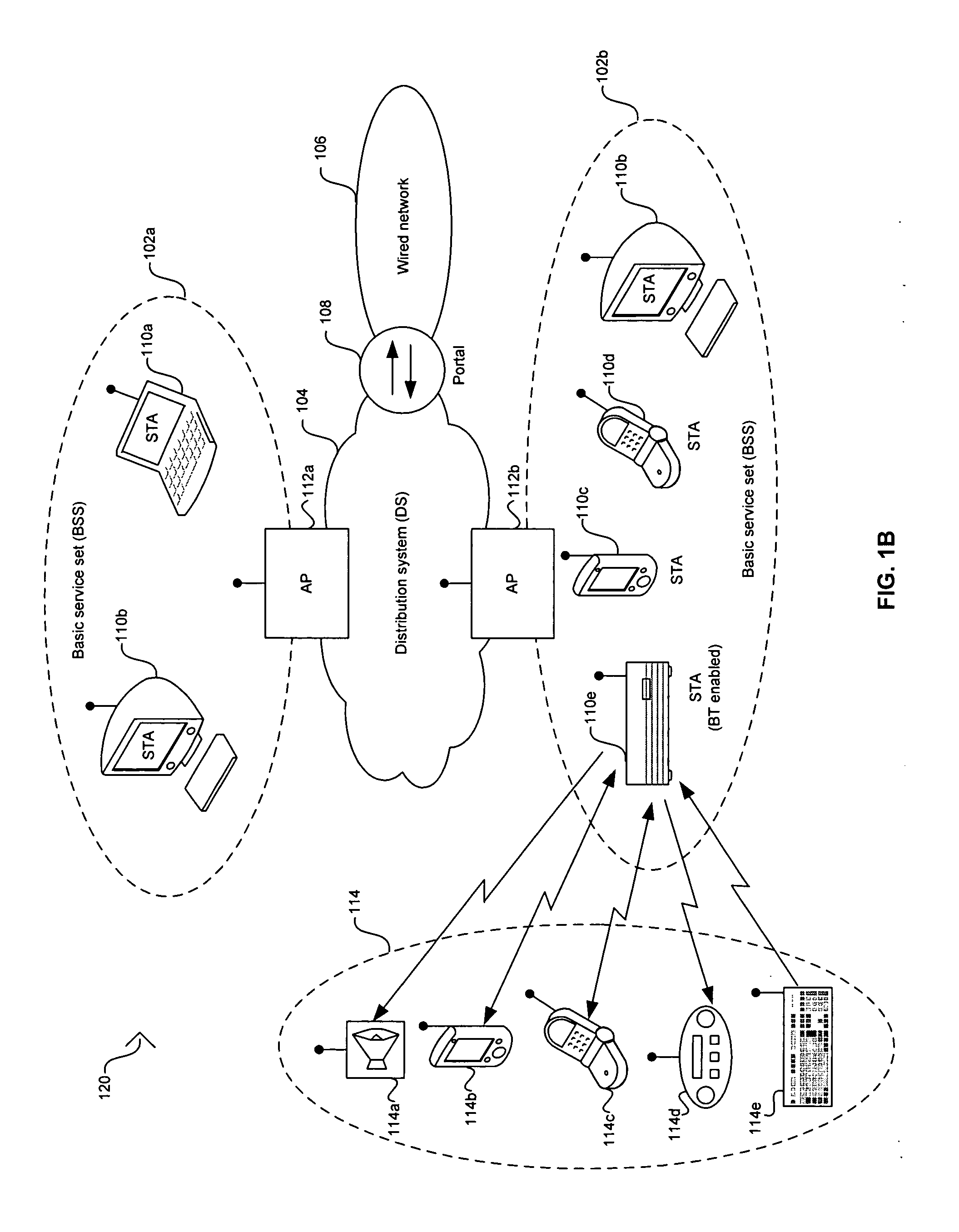Method and system for transmit power control techniques to reduce mutual interference between coexistent wireless networks device
a wireless network and transmit power technology, applied in power management, electrical equipment, radio transmission, etc., can solve problems such as significant interference or blocking signals, interference effects of different types, and significant interference between operating devices
- Summary
- Abstract
- Description
- Claims
- Application Information
AI Technical Summary
Benefits of technology
Problems solved by technology
Method used
Image
Examples
Embodiment Construction
[0026] Certain embodiments of the invention may be found in a method and system for transmit power control techniques to reduce mutual interference between coexistent wireless networks. A coexistence terminal comprising a WLAN radio and a Bluetooth radio operating as a master Bluetooth device may transmit signals to one or more remote controllers comprising a slave Bluetooth radio to increase transmission power when the isolation between the WLAN and master Bluetooth radios in the coexistence terminal is below a threshold. Link manager protocol (LMP) signals may be utilized for changing the transmission power. When the isolation increases above the threshold, signals may be generated to reduce the transmission power of the remote controllers. In some instances, in addition to increasing the transmission power of remote controllers, the transmission power of the Bluetooth radio or the WLAN radio may be reduced. The reduced Bluetooth or WLAN radio transmission power may be increased w...
PUM
 Login to View More
Login to View More Abstract
Description
Claims
Application Information
 Login to View More
Login to View More - R&D
- Intellectual Property
- Life Sciences
- Materials
- Tech Scout
- Unparalleled Data Quality
- Higher Quality Content
- 60% Fewer Hallucinations
Browse by: Latest US Patents, China's latest patents, Technical Efficacy Thesaurus, Application Domain, Technology Topic, Popular Technical Reports.
© 2025 PatSnap. All rights reserved.Legal|Privacy policy|Modern Slavery Act Transparency Statement|Sitemap|About US| Contact US: help@patsnap.com



